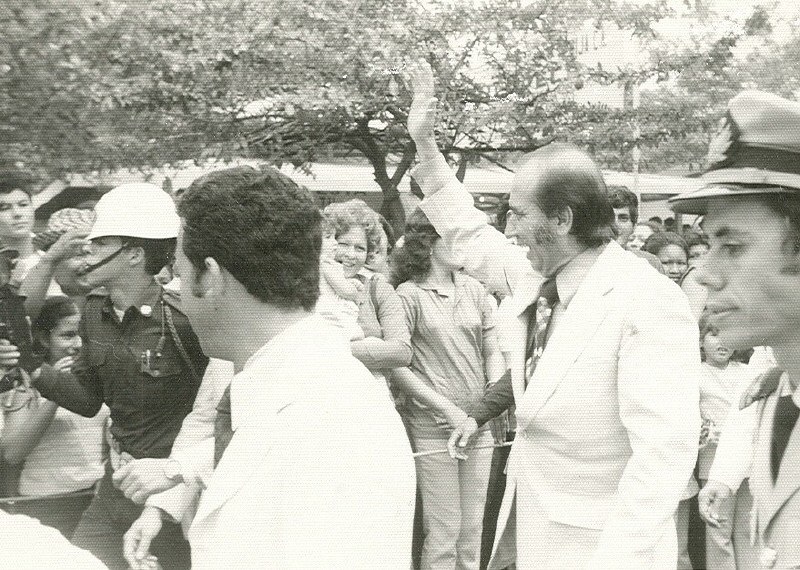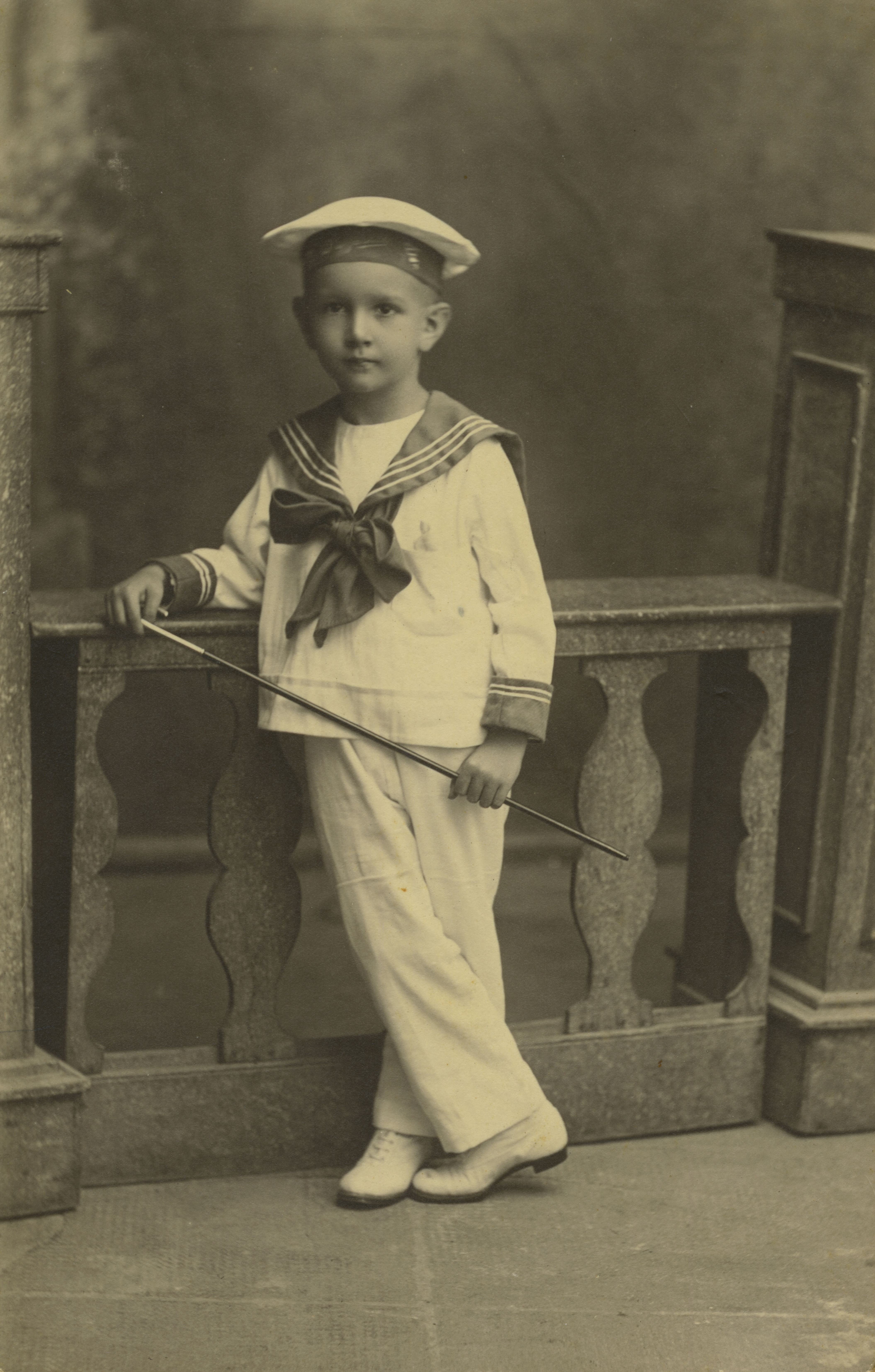|
Cathedral Of Our Lady Of Mount Carmel, Maturín
The Cathedral of Our Lady of Mount Carmel (or Cathedral of Maturín; es, Catedral de Nuestra Señora del Carmen de Maturín) is a Catholic church located in Maturín, Monagas State, Venezuela. It is one of the largest and best decorated churches in the country, and its domes are the second highest in Latin America, preceded by the Basilica of Our Lady of Guadalupe in Mexico. Its construction began on July 16, 1959, on the day of Our Lady of Mount Carmel, and it was inaugurated 22 years later, on May 23, 1981. Maturín City Council donated the land where the cathedral was built. The construction supervisor was the then Ministry of Public Works. The project was executed by contractor Francisco Baceta and architect Ernesto Prall, who dealt with the design and preparation of the construction drawings and structure. The execution of the remaining 90% of the work was carried out by Juan Serrano with his construction company. Due to the lack of budget, the cathedral was completed in ... [...More Info...] [...Related Items...] OR: [Wikipedia] [Google] [Baidu] |
Maturín
Maturín () is a city in Venezuela, the capital of the Venezuelan state of Monagas and a centre for instrumental exploration and development of the petroleum industry in Venezuela. The metropolitan area of Maturín has a population of 401,384 inhabitants. Maturín is also a busy regional transportation hub, connecting routes from the northeastern coast to the Orinoco Delta and the Gran Sabana. History Founding December 7, 1760, is the official date of the founding of Maturín (according to the Venezuelan Academy of History) by the Franciscan missionary Lucas de Zaragoza. However, the Jesuit priest Pablo Ojer found a document in the General Archive of the Indies which proves an earlier founding date for the city in 1722.González Oropeza, Hermann (1985): Historia del Estado Monagas. Ediciones Amon C.A., Caracas. (Biblioteca de Temas y Autores Monaguenses; Colección Guanipa; ensayos e investigación). This primitive town was called and its founder was the Spanish governor Ju ... [...More Info...] [...Related Items...] OR: [Wikipedia] [Google] [Baidu] |
Carlos Andrés Pérez
Carlos Andrés Pérez Rodríguez (27 October 1922 – 25 December 2010) also known as CAP and often referred to as '' El Gocho'' (due to his Andean origins), was a Venezuelan politician and the president of Venezuela from 12 March 1974 to 12 March 1979 and again from 2 February 1989 to 21 May 1993. He was one of the founders of Acción Democrática, the dominant political party in Venezuela during the second half of the twentieth century. His first presidency was known as the ''Saudi Venezuela'' due to its economic and social prosperity thanks to enormous income from petroleum exportation. However, his second presidency saw a continuation of the economic crisis of the 1980s, a series of social crises, widespread riots known as Caracazo and two coup attempts in 1992. In he became the first Venezuelan president to be forced out of office by the Supreme Court on charges for the embezzlement of bolívars (roughly 2.7 million US dollars) belonging to a presidential discretiona ... [...More Info...] [...Related Items...] OR: [Wikipedia] [Google] [Baidu] |
Buildings And Structures In Maturín
A building, or edifice, is an enclosed structure with a roof and walls standing more or less permanently in one place, such as a house or factory (although there's also portable buildings). Buildings come in a variety of sizes, shapes, and functions, and have been adapted throughout history for a wide number of factors, from building materials available, to weather conditions, land prices, ground conditions, specific uses, prestige, and aesthetic reasons. To better understand the term ''building'' compare the list of nonbuilding structures. Buildings serve several societal needs – primarily as shelter from weather, security, living space, privacy, to store belongings, and to comfortably live and work. A building as a shelter represents a physical division of the human habitat (a place of comfort and safety) and the ''outside'' (a place that at times may be harsh and harmful). Ever since the first cave paintings, buildings have also become objects or canvasses of much artistic ... [...More Info...] [...Related Items...] OR: [Wikipedia] [Google] [Baidu] |
Roman Catholic Cathedrals In Venezuela
Roman or Romans most often refers to: *Rome, the capital city of Italy *Ancient Rome, Roman civilization from 8th century BC to 5th century AD *Roman people, the people of ancient Rome *''Epistle to the Romans'', shortened to ''Romans'', a letter in the New Testament of the Christian Bible Roman or Romans may also refer to: Arts and entertainment Music * Romans (band), a Japanese pop group * ''Roman'' (album), by Sound Horizon, 2006 * ''Roman'' (EP), by Teen Top, 2011 *" Roman (My Dear Boy)", a 2004 single by Morning Musume Film and television *Film Roman, an American animation studio * ''Roman'' (film), a 2006 American suspense-horror film * ''Romans'' (2013 film), an Indian Malayalam comedy film * ''Romans'' (2017 film), a British drama film * ''The Romans'' (''Doctor Who''), a serial in British TV series People *Roman (given name), a given name, including a list of people and fictional characters *Roman (surname), including a list of people named Roman or Romans *Ῥωμα� ... [...More Info...] [...Related Items...] OR: [Wikipedia] [Google] [Baidu] |
Catedral De Maturin Nocturna
{{dab ...
Catedral may refer to: * Catedral (Buenos Aires Underground), a station * Catedral (district), a district of the San José canton, in the San José province of Costa Rica * Cerro Catedral, a mountain and ski resort in Argentina * Cerro Catedral (Uruguay), the highest peak in Uruguay See also * Cathedral (other) A cathedral is a Christian church which contains the seat of a bishop. Cathedral or The Cathedral may also refer to: Geography * Cathedral, Colorado * Cathedral Cavern (other), the name for several natural and industrial structures * Ca ... [...More Info...] [...Related Items...] OR: [Wikipedia] [Google] [Baidu] |
Roman Catholicism In Venezuela
The Catholic Church in Venezuela is part of the worldwide Catholic Church, under the spiritual leadership of the Pope in Rome. The Roman Catholic Church in Venezuela comprises nine archdioceses, three vicariates, a military ordinariate, and two Eastern Rite exarchates under the spiritual leadership of the Pope, the Curia in Rome and the Venezuelan Bishops Conference. According to ''The World Factbook'', 2009, 96% of the population is Roman Catholic. In 2018, Latinobarómetro, estimated that 66% of the population is Roman Catholic. Since the Second Vatican Council, the Roman Catholic Church in Venezuela has been weakened by a lack of diocesan and religious vocations. Many priests serving in Venezuela are foreign-born. Before president Hugo Chávez's government took power, Protestant churches began to successfully proselytize, especially among the urban poor. However, this has diminished in recent years. In the past, the Catholic Church did not have the funds, the personnel, or ... [...More Info...] [...Related Items...] OR: [Wikipedia] [Google] [Baidu] |
Diocese Of Maturín
In church governance, a diocese or bishopric is the ecclesiastical district under the jurisdiction of a bishop. History In the later organization of the Roman Empire, the increasingly subdivided provinces were administratively associated in a larger unit, the diocese (Latin ''dioecesis'', from the Greek term διοίκησις, meaning "administration"). Christianity was given legal status in 313 with the Edict of Milan. Churches began to organize themselves into dioceses based on the civil dioceses, not on the larger regional imperial districts. These dioceses were often smaller than the provinces. Christianity was declared the Empire's official religion by Theodosius I in 380. Constantine I in 318 gave litigants the right to have court cases transferred from the civil courts to the bishops. This situation must have hardly survived Julian, 361–363. Episcopal courts are not heard of again in the East until 398 and in the West in 408. The quality of these courts was lo ... [...More Info...] [...Related Items...] OR: [Wikipedia] [Google] [Baidu] |
Luis Herrera Campins
Luis Antonio Herrera Campins (4 May 1925 – 9 November 2007) was the president of Venezuela from 1979 to 1984. He was elected to one five-year term in 1978. He was a member of COPEI, a Christian Democratic party. Early life and career Luis Antonio Herrera Campins was born in Acarigua, Portuguesa. He studied law initially at Central University of Venezuela, though his studies were interrupted when he was imprisoned during the regime of Marcos Pérez Jiménez after he organized a strike against the dictator. He continued his studies and writings in exile in Spain and Germany. He eventually earned his law degree in 1955 from the Universidad de Santiago de Compostela. Herrera entered politics in 1937, and from 1959 to 1979 he served in the National Congress. He became President of Venezuela on 12 March 1979. Presidency Herrera won the December 1978 presidential elections for COPEI, replacing the social democrat Carlos Andrés Pérez of the Democratic Action (AD) party, ... [...More Info...] [...Related Items...] OR: [Wikipedia] [Google] [Baidu] |
Rafael Caldera
Rafael Antonio Caldera Rodríguez ( (); 24 January 1916 – 24 December 2009), twice elected the president of Venezuela, served for two five-year terms (1969–1974 and 1994–1999), becoming the longest serving democratically elected leader to govern the country in the twentieth century. His first term marked the first peaceful transfer of power to the opposition in Venezuela's history. Widely acknowledged as one of the founders of Venezuela's democratic system,John D. Martz, "Venezuela, Colombia, and Ecuador," in Jan Knippers Black, ed. ''Latin America, Its Problems and Its Promise'', 2nd ed. (Boulder, Colorado: Westview Press, 1991), 439 one of the main architects of the 1961 Constitution, and a pioneer of the Christian Democratic movement in Latin America, Caldera helped forge an unprecedented period of civilian democratic rule in a country beleaguered by a history of political violence and military caudillos. His leadership established Venezuela's reputation as one of ... [...More Info...] [...Related Items...] OR: [Wikipedia] [Google] [Baidu] |
Roman Catholic Church
The Catholic Church, also known as the Roman Catholic Church, is the largest Christian church, with 1.3 billion baptized Catholics worldwide . It is among the world's oldest and largest international institutions, and has played a prominent role in the history and development of Western civilization. O'Collins, p. v (preface). The church consists of 24 ''sui iuris'' churches, including the Latin Church and 23 Eastern Catholic Churches, which comprise almost 3,500 dioceses and eparchies located around the world. The pope, who is the bishop of Rome, is the chief pastor of the church. The bishopric of Rome, known as the Holy See, is the central governing authority of the church. The administrative body of the Holy See, the Roman Curia, has its principal offices in Vatican City, a small enclave of the Italian city of Rome, of which the pope is head of state. The core beliefs of Catholicism are found in the Nicene Creed. The Catholic Church teaches that it is t ... [...More Info...] [...Related Items...] OR: [Wikipedia] [Google] [Baidu] |
Raúl Leoni
Raúl Leoni Otero (26 April 1905 – 5 July 1972) was the president of Venezuela from 1964 until 1969. He was a member of the Generation of 1928 and a charter member of the Acción Democrática party, and the first Labor minister of Venezuela (during El Trienio Adeco, 1945–48). Background Leoni was born in El Manteco, Bolívar State, son of Clement Leoni Scribani, born in Corsica. He graduated at the Central University of Venezuela in Caracas as a lawyer. He was a member of the Generation of 1928, and the first Labor minister of Venezuela (during El Trienio Adeco, 1945–48). Presidency Leoni took control of the presidency on 13 March 1964, succeeding Rómulo Betancourt; both were members of the Acción Democrática. One of the pillars of a political consolidation in Venezuela, the ''Pacto de Punto Fijo'', was underestimated by Leoni, since in his opinion it reduced the "coherence and organization of the regime". Strictly, the pact mandated that the composition ... [...More Info...] [...Related Items...] OR: [Wikipedia] [Google] [Baidu] |




.jpg)
